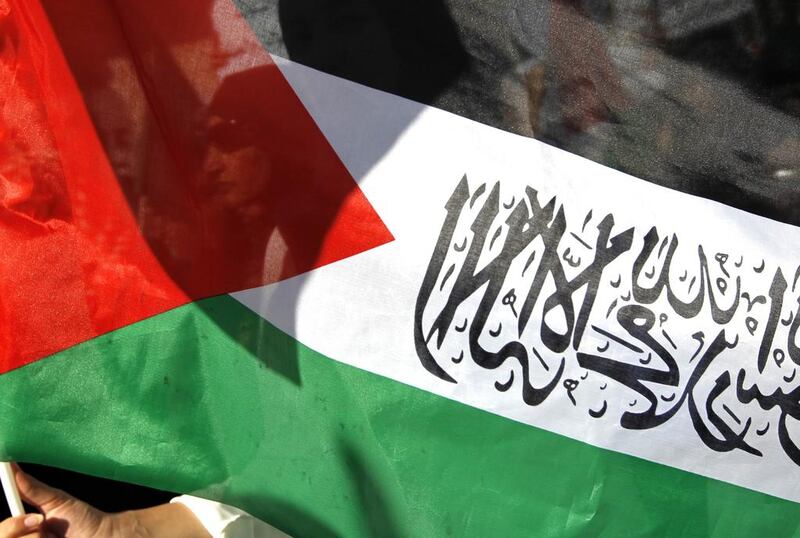The conflict in Gaza has exacted an extraordinarily heavy toll on the long-suffering civilian population, especially children and women. The images of the suffering, anguish and pain have provoked an enormous sense of outrage, anger and despair among Palestinians the world over.
Hamas’s barrage of primitive rockets may have been aimed at Israel, but ideologically their intended recipient seem to be its arch-rival Fatah, and its preference for a negotiated end to the conflict.
Forty years ago, in 1974, Yasser Arafat stood before the UN General Assembly and declared: “I have come bearing an olive branch and a freedom fighter’s gun. Do not let the olive branch fall from my hand.”
During the intervening years, the PLO packed away its “freedom fighter’s gun” in favour of the peace process.
However, the net result of this has been that the life of Palestinians today is worse than it was when there were no formal agreements between the two sides. Prior to Oslo, Palestinians had freedom of movement across all of Israel and Palestine and were not strangled by settlements.
It is no wonder that the olive branch looks like it has fallen irretrievably out of the hands of Mahmoud Abbas, whose gestures of peace remain unrequited by the Israelis and whose Palestinian Authority has, in many ways, become a security contractor for the Israeli occupation.
And there is a rising public sense that armed struggle is inevitable. “I really dislike Hamas but what they’re doing against Israel is the right thing,” a Jerusalemite friend told me, echoing an increasingly common sentiment.
“Israel has got to feel that there is a cost to its actions. It needs to get some of the same sense of fear and anguish we feel,” another said.
Hamas’s rockets are a “symbolic and radical assertion of an indigenous people’s unbending will to live with dignity in their ancestral homeland,” described Susan Abulhawa, the Palestinian author of the critically acclaimed book Mornings in Jenin in a public Facebook post.
“They are the minimal acts of self-defence of a people against whom unspeakable crimes have never ceased in 60 years.”
Palestine’s increasingly successful peaceful popular resistance movements have also been caught in the crossfire.
Rana Baker, a London-based Gazan, asked mockingly, in an article for OpenDemocracy, whether Palestinians “should grab guitars, pianos, and white ribbons, look up at their oppressors flying over their heads in Apaches and F16s, and sing a lullaby of peace”.
Ms Baker attempts to justify the targeting of civilians by Hamas– which is a war crime – through the convoluted logic that “Palestinians fire rockets into what belongs to them in the first place”.
In a show of dangerous self-deception, she even believes that armed resistance must continue “until Palestine is liberated, and by Palestine I mean historical Palestine”.
But can armed struggle deliver justice for Palestinians where negotiations have failed? Judging by the long annals of the Arab-Israeli conflict, armed struggle has been a double-edged sword – one that has dug deep into Palestinians, causing a great deal of pain.
In fact, in almost every military confrontation, Israel has come out on top and Palestinians have paid a heavy price. Yet for advocates of the way of the gun, such overwhelming evidence is ignored, or deemed irrelevant.
In contrast, the most significant gains made by the Palestinian cause have come through peaceful means. This is reflected in the first intifada, when ordinary, unarmed but dedicated Palestinians almost brought Israel to its knees. That the opportunities for peace and justice this threw up were manipulated in bad faith by too many Israeli leaders and squandered by the PLO, does not detract from the power of popular, peaceful resistance.
Palestinian peace activist Sulaiman Khatib believes the apparent surge in support for armed struggle is fleeting and is fuelled by outrage at what is happening to the population of Gaza.
“When people see all the images from Gaza, there is a shift in the balance between violent and non-violent struggle. But this is only temporary,” he told me.
“The large disparity in power in Gaza confirms my conviction that violence – or armed resistance – is not the way. The best way to change and combat the occupation is through non-violence.”
Mr Khatib is the co-founder of Combatants for Peace, a group of ex-fighters, both Palestinians and Israelis, who “decided to put down our guns, and to fight for peace”.
This organisation didn’t get off to an easy start. At the first-ever meeting of former Israeli and Palestinian combatants, the air was thick with distrust, loathing, disagreement and, above all, fear. The Palestinians and Israelis were all afraid that the meeting might be a trap.
Today, they are a well-organised and effective but relatively minor movement. In keeping with their ethos, they held a joint Arab-Jewish protest, albeit a small one, against the Gaza conflict.
“We also need co-resistance,” emphasises Mr Khatib.
And it doesn’t end there. The Palestinian grassroots weave together a loose web of activists and groups who employ only peaceful means: from the likes of Bassem Tamimi, the schoolteacher who became an anti-settlement activist in Nabi Salih to Emad Burnat, the farmer who became an Oscar-nominated filmmaker. There is hope after all.
Khaled Diab is a Belgian-Egyptian freelance journalist
On Twitter: @DiabolicalIdea





